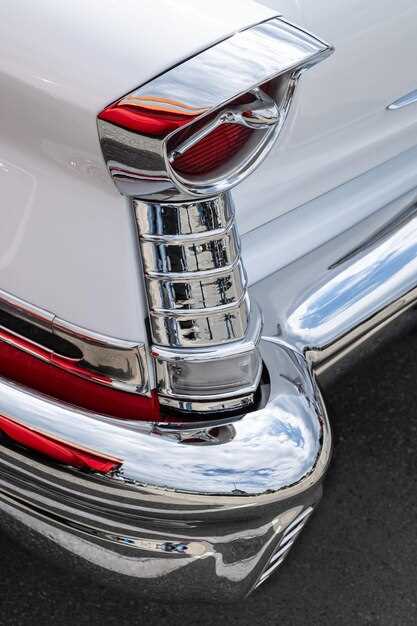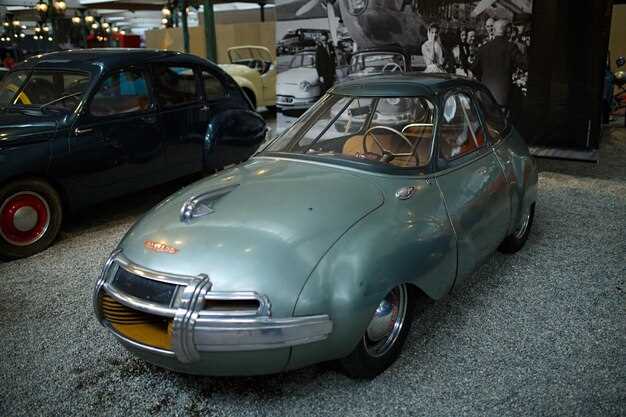Begin by тщательно verifying the steel body, the two doors that open upward, with дверями that connect to the roof line, ensuring the look remains faithful to original proportions. Maintain VIN records, chassis stamps, paint layers; any deviation signals a restauration would require careful planning with вниманием to color history. The характер of this machine reveals itself through precise seam work; genuine hardware, overal body integrity that survives today in well preserved examples. только documented evidence informs decisions.
Produced during 1954–1957, roughly 1,400 units exist. Today, values for surviving pieces routinely reach seven figures at premier auctions, private deals. Коллекционеров interest runs high; within club networks, один exemplar sets the benchmark for authenticity, condition, attracting attention from своего рода коллекционеров. other models from that era offer contrast, but this one remains unmatched for scope and charm.
Powertrain notes: a 3.0-liter inline-six with DOHC, Bosch fuel injection, roughly 215 horsepower; top speed near 162 mph; 0–60 mph in the 7–8 second range. Doors opened wide reveal the silhouette, a critical detail because a perfect restoration would mimic original performance; maintenance history becomes a key factor in grading. A complete restoration aligns with factory geometry, today seen as the standard by most specialists.
Provenance matters: factory build records, service logs, restoration histories; this strengthens value for коллекционеров, enriching the look for широкой audience. Join a престижный club of enthusiasts to compare serial numbers, panel dating, color codes. Look for documentation confirming originality; avoid shops offering unsigned restorations without evidence.
Maintenance tips: inspect body seams for corrosion, check sills, wheel arches; doors open smoothly, cadence crisp, gaps even. For один owner, or коллекционеров circle, maintain a documented archive; store in a climate-controlled space, schedule regular checks, preserve service records. Seek specialists who provide provenance-backed restoration notes, avoiding amateur rebuilds that obscure originality.
Production Timeline: 1954–1957 Milestones

Begin with factory logs for 1954–1957; extract launch date, production count, export batches; 1954 marks first shipments to america; showroom openings; press tours; price points documented; among коллекционера circles, interest spreads across различных рынков; index from каждого milestone to monitor supply.
1955 milestones feature ramp-ups at assembly lines; deliveries to america accelerate; public display at Champs-Élysées attracts attention; transmission refinements raise reliability; new color options reach showroom floors; doors open to collectors like Michael; geld pricing remains stable; délégance noted in press coverage.
1956 expansion increases annual output; parts supply stabilizes through revised contracts; restauriert examples appear at клуба gatherings across europe, america; rood light cues in showrooms highlight styling cues; index tracking confirms momentum across различных сегментов.
1957 finale caps the run; a smaller batch completes production; the open-roof variant enters limited trials; several units reach museums; ikonа status grows as restauriert examples circulate within клуба networks; Michael notes rising demand, мира; index from каждого года informs коллекционера decisions.
Engine and Performance: 3.0L Inline-Six, 215 HP

For concours-grade selection, prioritize originality, matching numbers, Bosch mechanical injection; this M198 inline six breathes with precise throttle response, broad torque curve. Power figures remain 215 HP (DIN); torque around 300 Nm, dependent on exhaust tune, gear ratio. Displacement sits at 2996 cc; bore 96 mm, stroke 86 mm. Redline near 6,800–7,100 rpm; top speed around 225 km/h with proper tyres, aerodynamic bodywork.
Details such as correct exhaust manifolds, cam covers, Bosch fuel pump define value; this engine, known as ikone of its era, holds rarity for коллекционера, enthusiasts. From order of marque history, only a portion remains with factory numbers intact; such units reach concours-level demand, time on market shortened.
Interior features leder upholstery, minimal chrome, red accents; this style remains stylish. Maintenance requires periodic timing, proper seals, correct fuel lines; time and care guard against deterioration. мерседес provenance is evident in badge, trim cues; such signals satisfy discerning collectors. With einem skilled technician, restauration projects maintain reliability; from specialists to collectors, this powerplant stays known in time.
Chassis, Suspension, and Handling
Begin with a precise chassis check; inspect tubular spaceframe joints for fatigue; verify welds; replace worn bushings; restore precise alignment; assess doors (дверями) for flush fit; inspect door seals.
Suspension layout features front independent with double wishbones; coil-sprung dampers; rear De Dion axle; transverse leaf spring; toe and camber adjustability via compliant bushings.
Handling characteristics: long wheelbase yields high-speed stability; steering offers direct feedback; mid-corner balance tends toward neutral with proper alignment; throttle modulation required to rotate; braking must be progressive; tires should match period intent; otherwise grip can degrade under load.
Maintenance tips and adjustability
Maintenance pointers: check steering linkage; replace worn bushings; align front axle; verify camber; set tyre pressures to recommended values; verify wheel bearings; check for corrosion.
Doors (дверями) align with a confidence-inspiring click; deze vehicle from mercedes-benz lineage; 55-го года examples appear in zealand registry; from produceerde components to NOS parts, полностью documented value rises; michael notes that although provenance varies, the geld value increases with thorough history documentation; here the niveau remains perfect when модель details match original specifications, including красной interiors.
Design and Gullwing Engineering: Doors, Weight, and Aerodynamics
Choose a fully restored exemplar that preserves hinge geometry, door-sill alignment; verify weight distribution mirrors factory figures; check concours-grade finishes, porosity, hardware authenticity.
Doors; structural integration
- Gullwing mechanism relies on top-hinged panels; reinforced steel backbone; latch housings withstand repeated operation during concours judging.
- Each door weighs roughly 60–90 kg; hinge carriers exhibit tight tolerances when tested in simulated opening cycles.
Weight; aerodynamic considerations
- Space-frame construction uses tubular steel; body panels employ steel with selective aluminum to improve stiffness while limiting mass.
- Front-engine layout creates a forward weight bias; curb mass typically about 1,150–1,350 kg depending on trim and equipment; glass, leather, and hardware contribute ±60–100 kg variance.
- Drag coefficient figures cited in historic literature fall in the 0.6–0.7 interval; nose shape, wheel arches, and underbody detailing minimize lift at speed; concours documentation often highlights the role of a clean undertray for stability.
For club collectors and customers seeking эксклюзивный ikon, rarity is a deciding factor; restored examples have годов of provenance,сachet finishes in elfenbein tones, and a Feld-design language that Michael-style teamsстрогиеκολου apply; Barrett restoration notes and een gestionar gereviseerd components help maintain vollständig authenticity, без игрушечных деталей, что поднимает мерседес-klass-интеграцию в concours кругу на высокий уровень.
Collector’s Insight: Provenance, Documentation, and Restoration Basics
Start with a complete provenance pack: factory build sheet; certificate of originality; service history; restoration invoices. Obtain title history from the original region; note the initial color; confirm chassis numbers. Request records from aaldering; Champs-Élysées listings provide transfer stamps; verify ownership chain.
Documentation basics include a cohesive dossier: factory options; paint codes; interior materials; serial numbers; period photos. Store copies in both original plus digital formats; ensure legibility; label each file with date; source references.
Restoration basics: define scope early; prefer authentic parts sourced from steel components; leder upholstery; logs for every modification; orientation checks; maintain a detailed ledger.
Open doors retain authenticity: hinges, latch geometry, door frames, corrosion checks; preserve patina where appropriate; replacements require documented justification.
Provenance networks: zealand contacts; aaldering offers parallel examples; Champs-Élysées ties provide documented history; cross-check with international registries.
ikone status demands precise records: original paint code; interior trim material; hardware provenance; careful restoration notes. своего ownership lineage; коллекционирование ethos требует полностью отслеживаемых записей.
design cues from the era inform preservation choices: true steel chassis; ikone lines; rood color options; leder interiors; niveau as benchmark; allerhoogste standards among collectors; conventional restoration methods preferred; года marks help verify alignment of components.